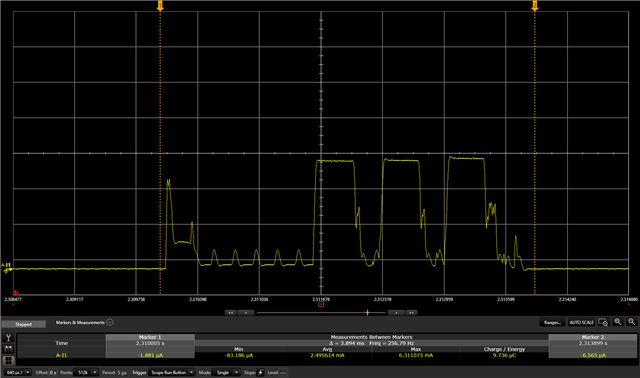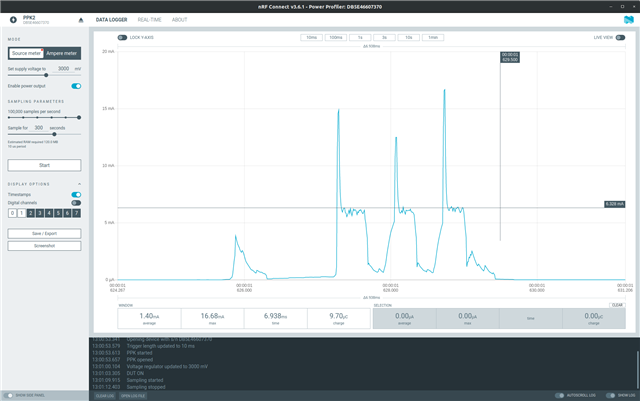I have connected BLE device to the Nordic's power profiler kit 2 to do power analysis.
My BLE device advertises every 5 seconds.
I can see current consumption spike every 5 sec in Power profiler waveform.
First I saw waveform with 100 sample per seconds setting.
After that I analyzed after changing the sampling rate to 1000 samples per seconds.
I saw that current value measured by analyzer changes proportionally as I increase the sampling rate setting.
Please help me to understand what is the actual current being consumed by my device?
For reference this the table of actual measured values.
| Samples/Seconds setting | Measured Current |
| 100 | 1.4mA |
| 1000 |
6.1mA |
| 10000 | 8.5mA |
|
100 000 |
15.5mA |
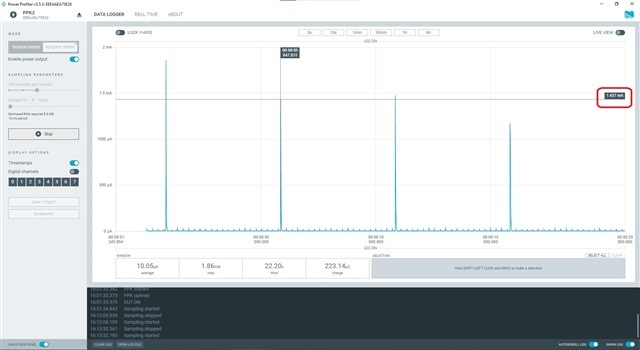
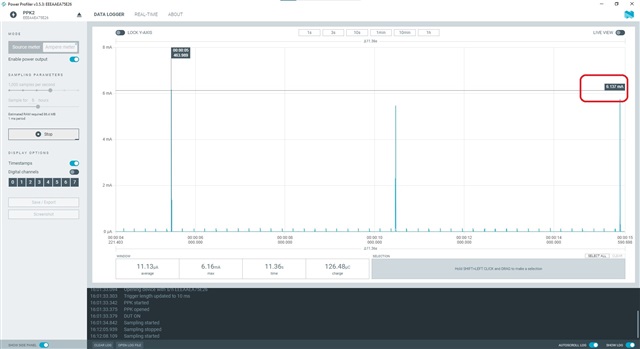
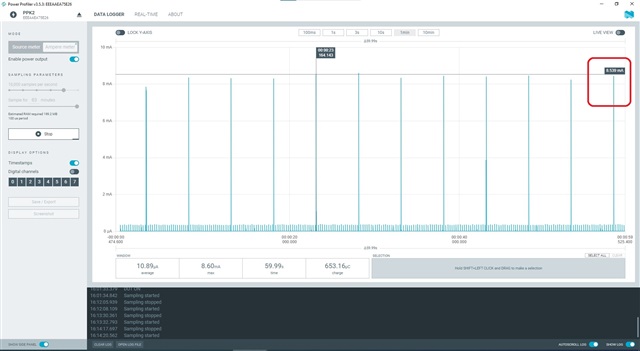
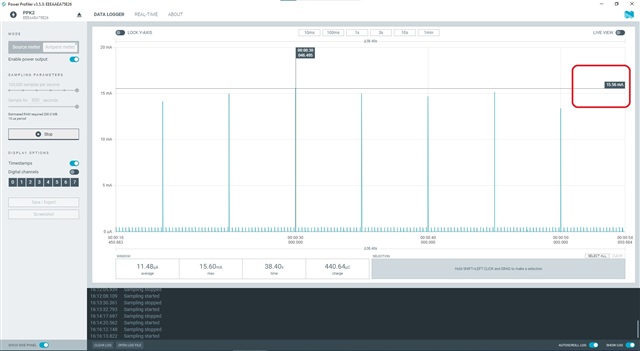
Thank you
Dnyaneshvar



